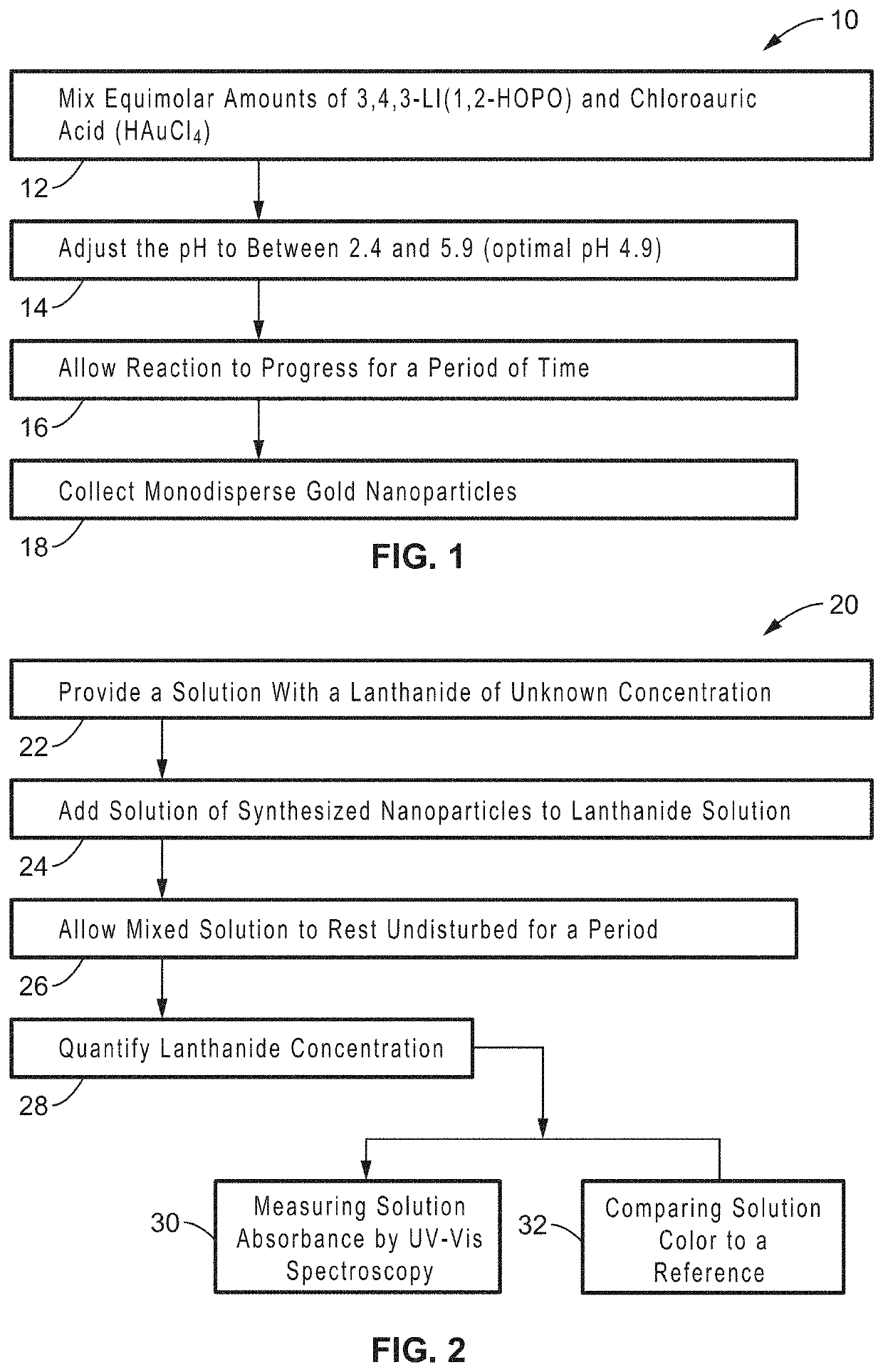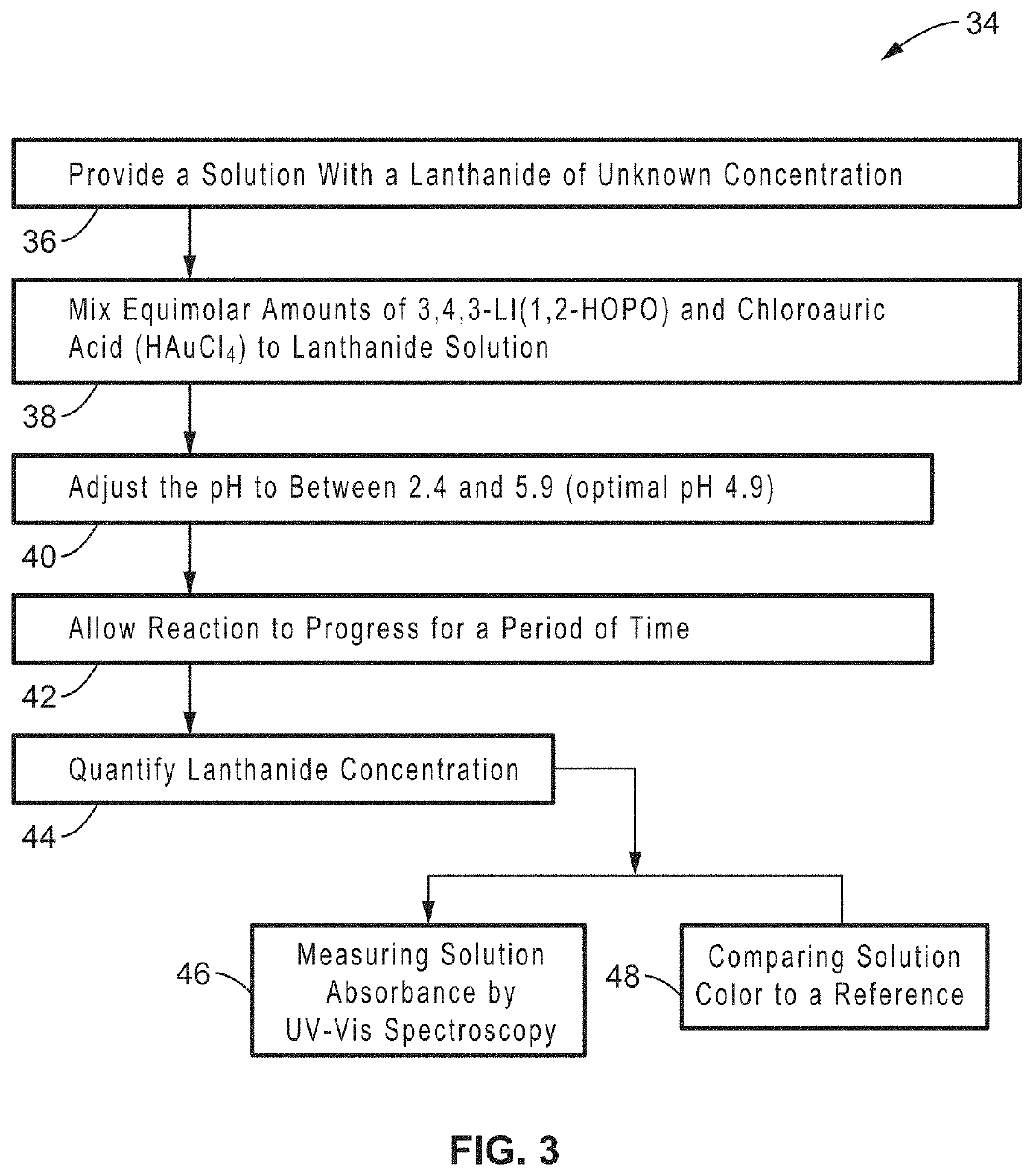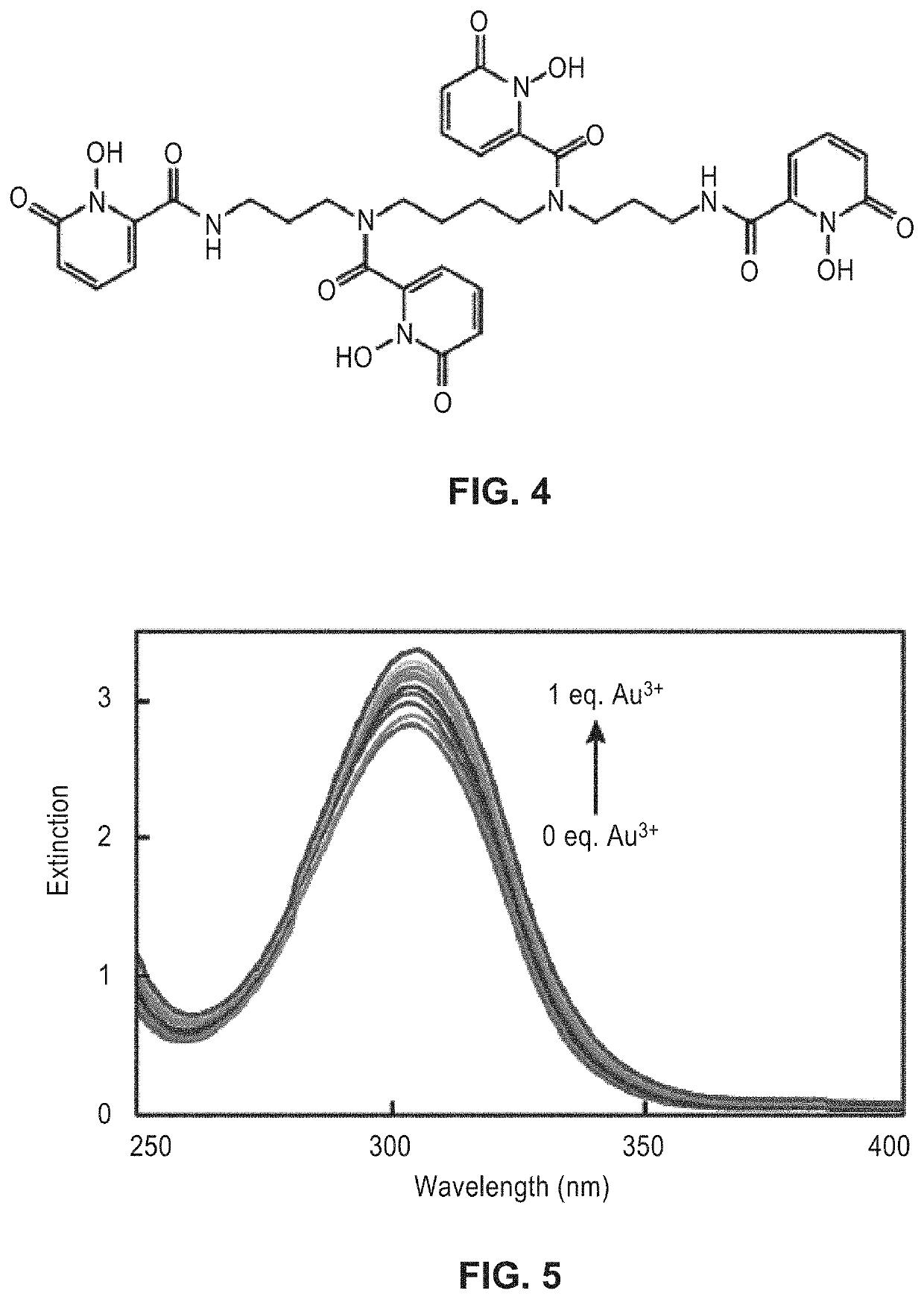Synthesis of gold nanoparticles functionalized with hydroxypyridinone chelators for metal sensing
a technology of hydroxypyridinone chelator and gold nanoparticle, which is applied in the field of chemical sensing, can solve the problems that chelator functionalization usually requires tedious multi-step reactions, and achieve the effect of reliable detection and quantification of f-group elements, inexpensive production and us
- Summary
- Abstract
- Description
- Claims
- Application Information
AI Technical Summary
Benefits of technology
Problems solved by technology
Method used
Image
Examples
example 1
[0063]In order to demonstrate the functionality of the detection methods, the solution affinity of Au3+ and the therapeutic chelating agent 3,4,3-LI(1,2-HOPO) was demonstrated. The chemical structure of the chelator is shown in FIG. 4.
[0064]Complexation with Au3+ was observed even at acidic pH (2.2), where most of the HOPO binding units were protonated. Therefore, only a small fraction of partially deprotonated 3,4,3-LI(1,2-HOPO) was necessary to trigger the complexation, indicating a high stability between the cation and the chelator. Above pH 2.4, complexation was followed by the reduction of Au3+ to Au0, and subsequent formation of AuNPs. During the growth of the particles, 3,4,3-LI(1,2-HOPO) was observed to act as both reducing and stabilizing agent.
[0065]The interaction between Au3+ and 3,4,3-LI(1,2-HOPO) was initially studied at pH 2.2 because the chelator has shown different complexation behaviors (from total binding to no interaction) with several metals at this acidic pH. I...
example 2
[0071]To demonstrate the ability to grow metal nanoparticles with 3,4,3-LI(1,2-HOPO), AuNPs were synthesized by adding 1 equivalent of HAuCl4 to 3,4,3-LI(1,2-HOPO) solutions (400 μM final concentration). The pH of the solutions was adjusted with hydrogen chloride or sodium hydroxide prior the addition of Au3+. The resulting solutions were mixed for 10 s and left undisturbed at room temperature for 1 h. 100 μL of the AuNP solutions were used to record UV-Vis spectra with a SpectraMax iD3 Multi-Mode Microplate Reader. Transmission electron microscopy (TEM) was performed using a FEI Them IS (Thermo Fisher Scientific, Waltham, Mass.) with an image aberration corrector, operated at 300 kV. AuNP morphology and elemental composition were characterized by high-angle annular dark field (HAADF) and energy dispersive spectroscopy (EDS) in STEM mode. High-resolution TEM (HR-TEM) micrographs were acquired on a FEI Ceta camera. Hydrodynamic diameter and zeta potential values were measured with a ...
example 3
[0083]To demonstrate the single pot synthesis and detection with nanoparticles that are grown in situ in the sample solution, competition experiments were performed to illustrate that chelation of the Au3+ is necessary for the synthesis of Au nanoparticles. Because the lanthanides quench the growth of gold nanoparticles, the higher the lanthanide concentration, the less intense the nanoparticle color becomes (from strong red to colorless) and this process can be used to quantify an analyte concentration.
[0084]To generally assess the effects of changing input parameters and the presence of competing cations, solutions containing divalent (Ca2+ or Cu2+) or trivalent (La3+, Eu3+, Tb3+ or Gd3+) cations were spiked into a set of 3,4,3-LI(1,2-HOPO) solutions at pH 4.9 and left to react for 10 min. Fixed amounts of HAuCl4 were added into the mixtures for a final volume of 100 μL where ligand and Au3+ concentrations were 400 μM, and the cation concentrations ranged from 0 to 1.25 equivalent...
PUM
| Property | Measurement | Unit |
|---|---|---|
| diameter | aaaaa | aaaaa |
| pH | aaaaa | aaaaa |
| pH | aaaaa | aaaaa |
Abstract
Description
Claims
Application Information
 Login to View More
Login to View More - R&D
- Intellectual Property
- Life Sciences
- Materials
- Tech Scout
- Unparalleled Data Quality
- Higher Quality Content
- 60% Fewer Hallucinations
Browse by: Latest US Patents, China's latest patents, Technical Efficacy Thesaurus, Application Domain, Technology Topic, Popular Technical Reports.
© 2025 PatSnap. All rights reserved.Legal|Privacy policy|Modern Slavery Act Transparency Statement|Sitemap|About US| Contact US: help@patsnap.com



